3 Types of automotive fuses
Three types of automotive fuses
Automotive fuses are available in several types: blade, cartridge and bolt-down. Within those categories, carmakers may choose a mega, mini, standard, micro or low profile style fuse based on space requirements. Here are the three types of automotive fuses
There are six types of automotive blade fuses
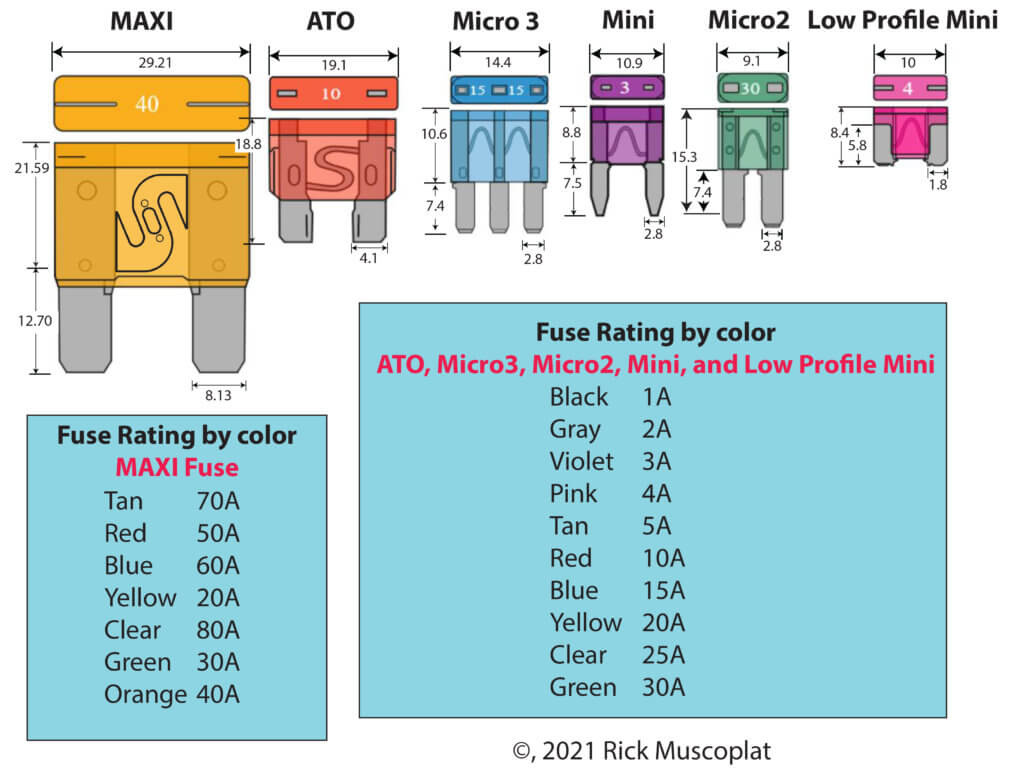
Ten types of automotive cartridge fuses
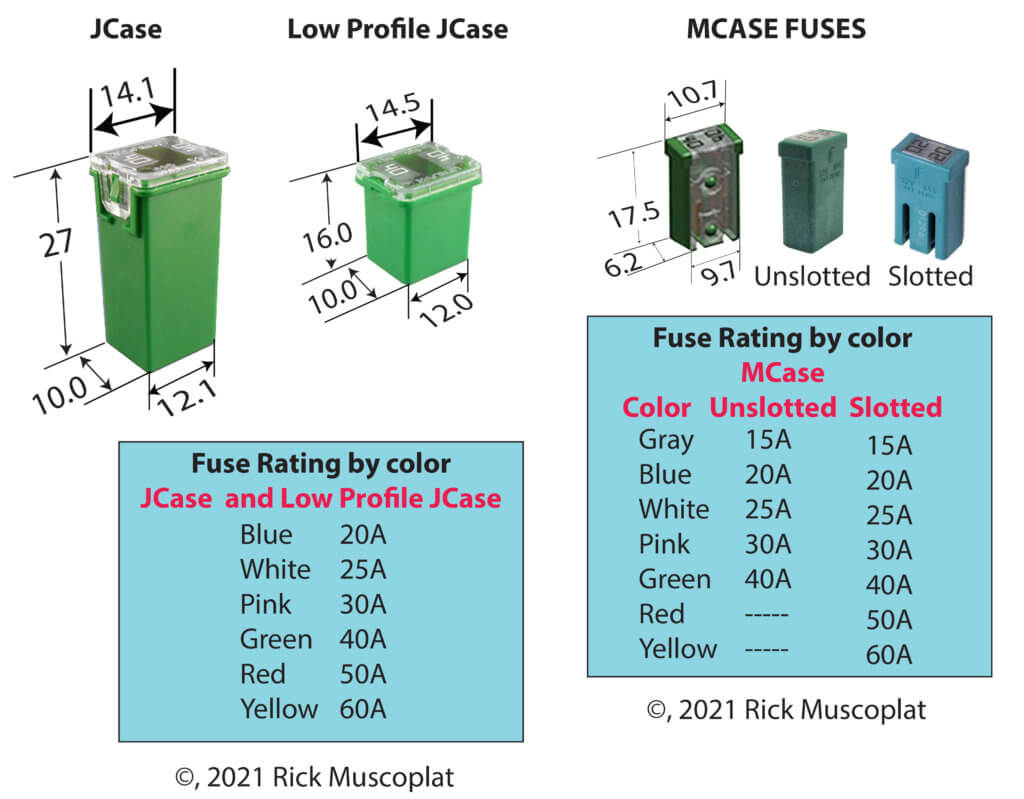
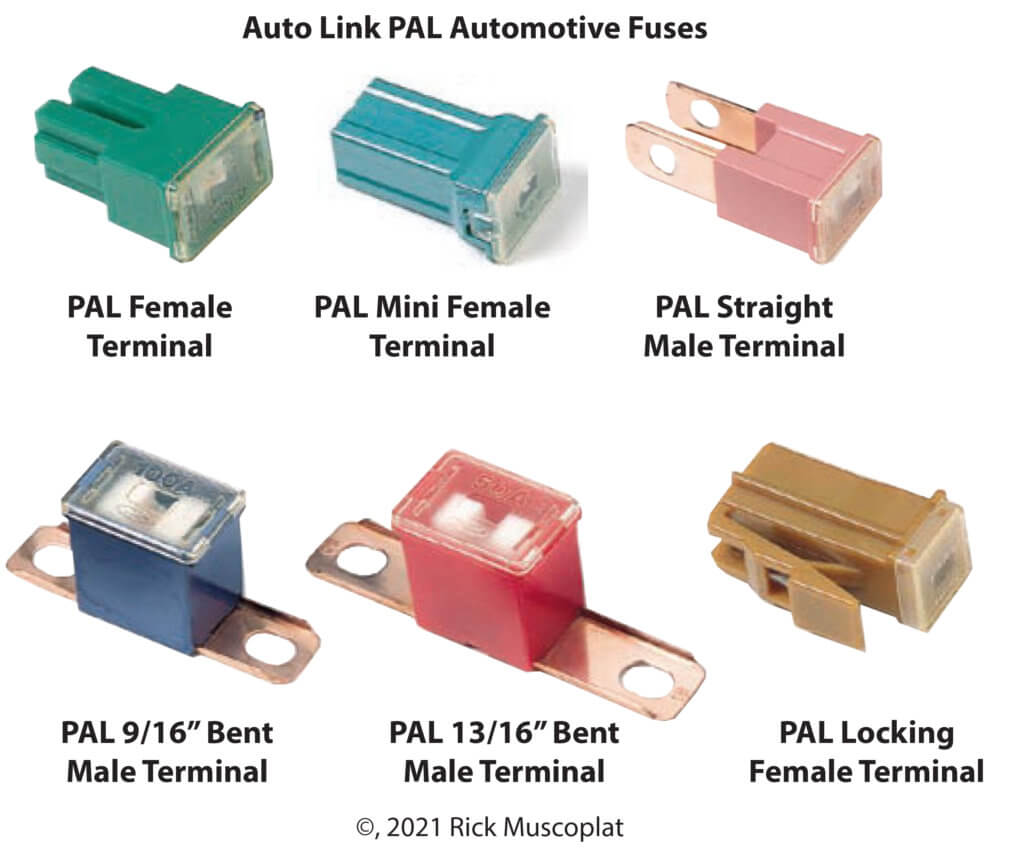
Three types of automotive bolt-down fuses
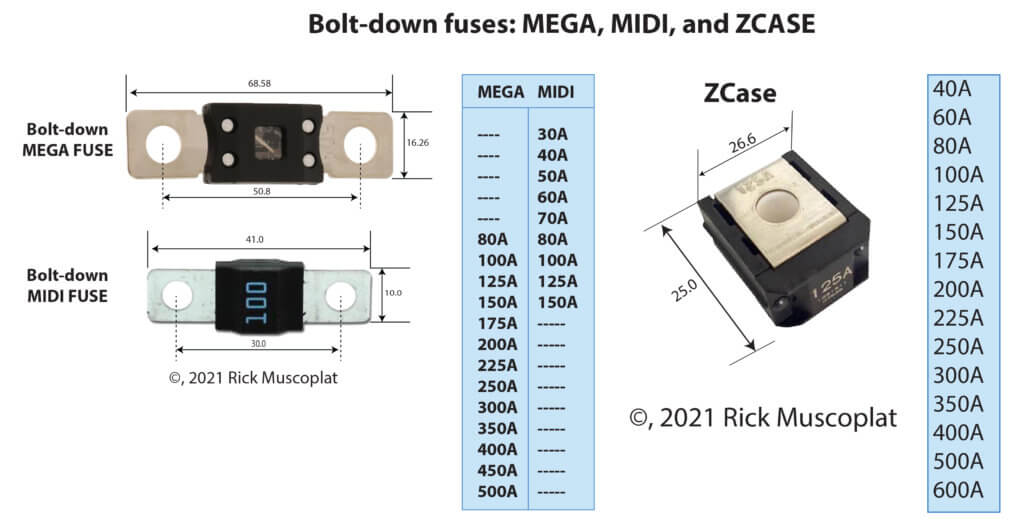
What does a fuse do?
An automotive fuse is designed to protect a circuit from overheating and starting a fire in the event of an excessive current draw or short circuit. Each fuse incorporates a metal “element” of a certain thickness, designed to conduct a set maximum amount of current and melt at a specified temperature. If the current flowing through the fuse exceeds the fuse rating, the element will melt, “open the circuit” and interrupt current flow to the device. The metal element will also melt if there’s a short in the circuit.
What causes a current overload?
1) Too many devices drawing current from a circuit will cause an overload. For example, you plug a laptop and several cell phone chargers into the power port on your dash.
2) A device malfunctions, drawing more current than the circuit was designed to handle.
3) A device wears or corrodes, causing it to draw too much current. A worn blower motor, for example, can develop internal corrosion or motor bearing wear. The internal wear can cause mechanical drag that slows the rotation, causing the motor windings to draw too much power. Or, the wear can be so great that the motor stalls and blows the fuse. If you don’t correct the problem and just replace the fuse, it will blow again when the blower motor starts drawing too much current.
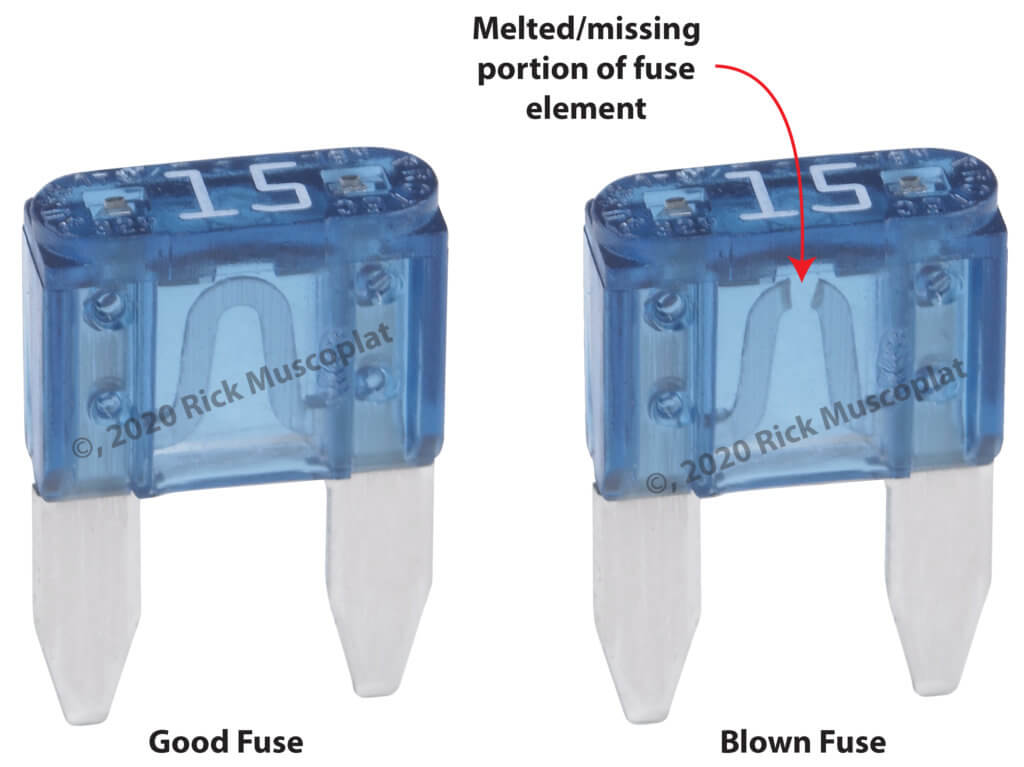
Fuse box locations
Carmakers usually install several fuse boxes in a vehicle. For example, the underhood fuse box normally contains fuses for the devices located under the hood. So you’ll find fuses for the electric radiator fans, windshield wipers, washer pump, AC compression, ABS brake module and pump, headlights, and brake lights.
The interior fuse box is often located under the dash on either the left or right side. Interior fuse boxes usually contain fuses for all the internal accessories, like the radio, blower motor, dash lights, power port, and computer modules.
For more information on fuse box diagrams, click here.
©, 2021 Rick Muscoplat
Posted on by Rick Muscoplat